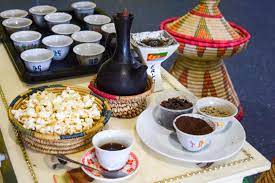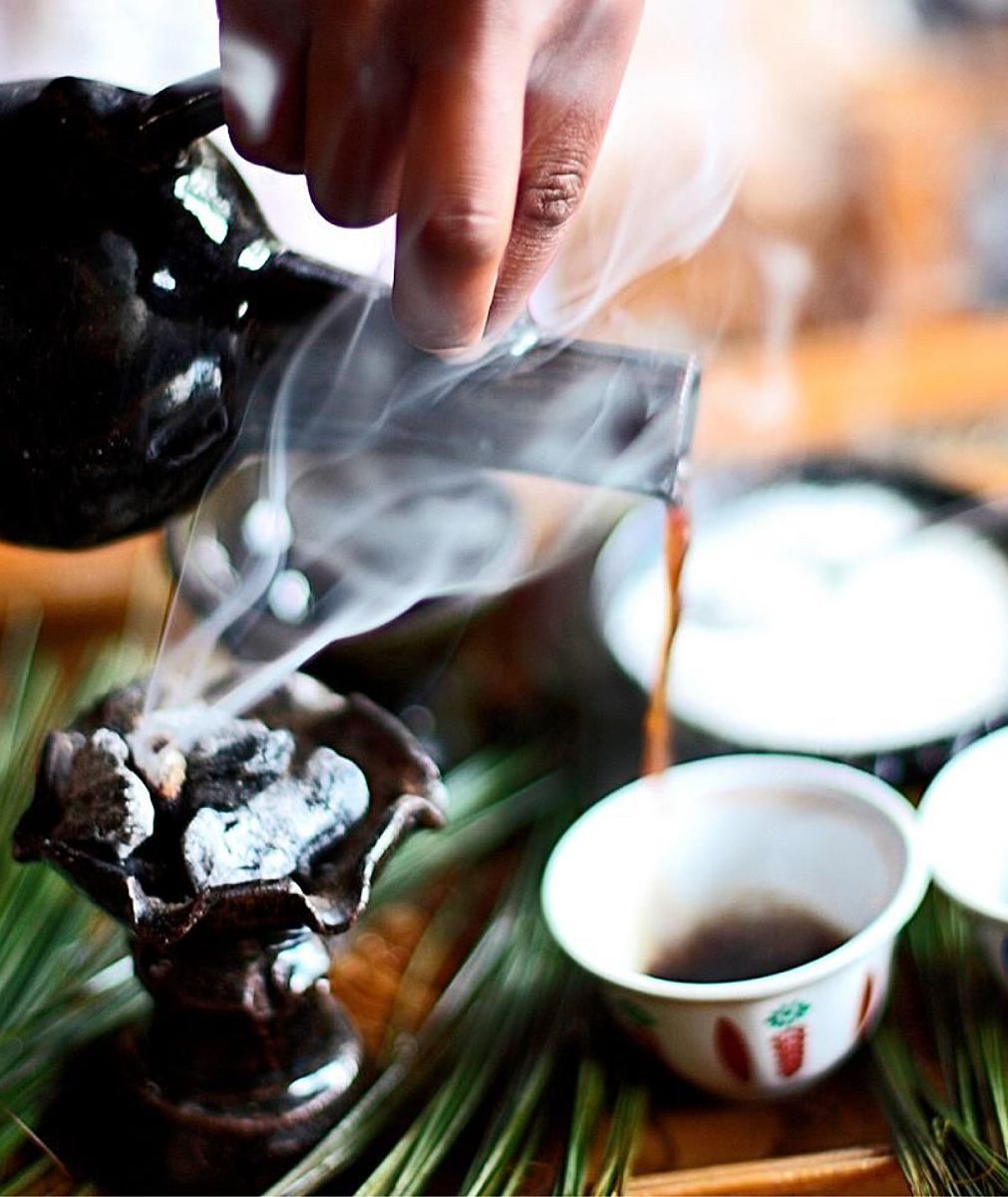
Typically, women perform the ceremony for her guests. First, fresh Ethiopian coffee beans roast over a small open furnace. In order to ensure an even roast, the host continuously turns the beans. As she turns the beans, your nose is filled with the aroma of fresh coffee intermingled with hints of fruit and flowers.
Pull up a chair. Take a taste. Come join us.
Once the beans are evenly roasted, the host passes the pan of roasted beans in front of everyone’s face – giving you a better smell of the emitting fragrances. The smell is nothing like what you would expect. Unlike the smell of coffee from your local Starbucks, this Ethiopian coffee has a fruity, sweet smell that just warms your soul. The host then pours the beans into a wooden bowl called a mukecha. The mukecha is used to grind the beans by hand.
Finally, the coffee grounds are poured into a jebena, which is a pot is made of thick clay and a long pouring spout. The jebena is extremely functional in that it ensures the coffee grounds don’t burn over the open furnace. Water is added to the jebena and then the mixture is boiled.




